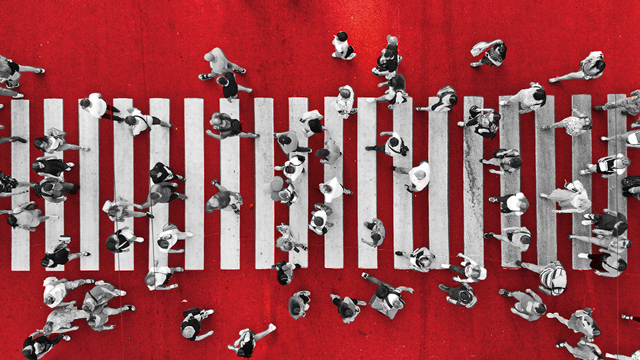

When we think of roads, we think of the carriageway – the space devoted for motorized vehicles. We do not immediately associate pedestrian sidewalks and bicycle lanes as indispensable parts of the road system. These fixtures are the first to go whenever government expands the carriageway to accommodate the increasing number of motorized vehicles, most notably, private cars.
In 2014 when the Department of Public Works and Highways (DPWH) expanded MacArthur Highway from two lanes to 4 lanes, it gutted existing sidewalks to add the two lanes. The logic of this action, perhaps the prevailing idea among government planners and engineers, is that carriageway widening eases the passage of motorized vehicles.
The truth, however counter-intuitive, accomplishes the opposite: carriageway widening will ease the passage of motorized vehicles to a certain extent, until induced demand for cars overruns the new carriageway and creates another cycle of vehicular congestion. Meanwhile, without alternative mobility infrastructure like pedestrian sidewalks and protected bicycle lanes, commuters are stuck in this congestion.
According to the DPWH 2012 Highway Safety Design Standards, a standard road is composed of carriageways and road shoulders. The number of lanes and the width per lane of carriageways depend on the type of road. A standard road should also have shoulders to reduce accidents. The manual, however, lacks a clear standard for the mandatory provision of pedestrian sidewalks and bicycle lanes. While there are several mentions of sidewalks and bicycle lanes in the manual, these fixtures are not required to be constructed as standard designs of our road system. In other words, provisions for sidewalks and bicycle lanes are merely optional, “where warranted and where road space is available,” according to the manual.
Further, the DPWH Design Guidelines, Criteria and Standards 2015 on Highway Design (Volume 4) provides that construction of pedestrian sidewalks is on a case-to-case basis. “Ordinarily, little or no provision is made for pedestrian use of highways. Justification of sidewalks in rural areas depend upon the volume of pedestrian and vehicular traffic.” (READ: WATCH: Cagayan police officers draw pedestrian lane made of chalk)
This lack of prescribed necessity, and the consequent absence of standards, make pedestrians and bikers second-class road users. They partake only of crumbs from the mobility table. Further, the burden of constructing pedestrian sidewalks and protected bicycle lanes falls to local governments, contributing to wide differences in the design and materials used, that is if sidewalk construction gets attention at all. One notices this in traveling from one city to another, or even from within one city: sidewalks and bicycle lanes in gentrified Maginhawa Street and Tomas Morato Avenue are different from other areas within Quezon City, if they exist at all; and pedestrian sidewalks and bicycle lanes are present in some cities, but absent in others. (READ: Pedestrian musings: The destruction of mobility in the metro)
“Complete streets” policy
Roads are indispensable infrastructure for mobility. They should be constructed in such ways that they are useful for everyone, regardless of age, ability, income, or mode of transportation. Thus, the “complete streets” policy is introduced to enable the safe use of roads for all kinds of users, whether pedestrians, bikers, drivers, or commuters.
There is no single concept of what “complete streets” should look like. But generally, it can be characterized by this non-exhaustive list of infrastructure elements, namely:
1. Appropriate widths for pedestrian sidewalks and accessible curb ramps for children and persons with disability, preferably at-grade or at street-level
2. Street furniture such as bicycle parking racks, pedestrian-scale lighting, protected benches, and street vegetation
3. Protected network of bicycle lanes, preferably at-grade and in rubber paint to prevent skidding, bicycle tracks, and route signages
4. On-street car parking in local roads, on-street bicycle parking, and loading zones
5. Appropriately sized vehicle lanes; speed bumps, humps, or other devices to alert the driver and force them to slow down; raised medians; exclusive bus lanes; and standard-sized road shoulders
6. High-visibility crosswalks, pedestrian refuge islands, bicycle boxes at intersections, and a variety of signals (i.e., pedestrian countdown timers, bicycle signals, etc.)
Better transport leadership
Transportation is defined as the movement of people and goods from an origin to a destination. The key principle in this definition is the “movement of people and goods.” It does not say “movement of vehicles.” Thus, our government planners and engineers must strive to move people and goods, using whatever efficient and effective modes or means available.
The 2017 National Transport Plan (NTP) approved by the National Economic Development Authority affirms this principle. Section 4 of the NTP states: “Environment-friendly transport systems shall be supported in order to promote environmental sustainability and protection... Non-motorized means to achieve inclusive mobility and accessibility shall include transit- oriented development, prioritization of pedestrians, provision of support facilities that mainstream gender considerations, and inclusion of green ways network, i.e., elevated walkways, covered walkways, sidewalks and bike lanes.”
For its part, DPWH says that a system is already being proposed for EDSA: an elevated bicycle lane combined with pedestrian walkway. The initiative is a welcome development. DPWH, however, has yet to review and approve the proposed design. (READ: #WalkEDSA: 9 things I learned from walking the length of EDSA)
Every day, millions of people travel to their work or school located in areas other than the immediate vicinity of their homes. The travel and commute cost money, time, and effort. These constraints impose a limit on the city’s level of productivity. It can be said that the city’s productivity depends on the availability of short, affordable, and comfortable modes of transportation. It is therefore imperative for our planners and engineers to mainstream non-motorized modes in the mix of competing road uses. – Rappler.com
Jayson Edward San Juan is a licensed urban planner and an advocate of people-centered urban design, with a focus on inclusive mobility and the role of institutions in transportation. He took his MA in Urban and Regional Planning in the University of the Philippines. Any opinion stated in this piece is his, and does not necessarily reflect the position of the organizations to which he is affiliated.